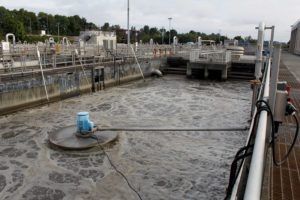S.B. 98 Broadens Ability to Turn Wastewater into Renewable Natural Gas

Starting September 29, 2019, natural gas providers in Oregon will have a new, renewable way of powering their customers’ homes. Governor Kate Brown executed a new law at the end of July, 2019 allowing capture, treatment, and conversion of methane found in wastewater into renewable natural gas (“RNG” or “biogas”), which can then be used to provide power to homes using existing infrastructure.
While converting wastewater to RNG is more expensive than fracking, biogas burns more cleanly than traditionally-obtained natural gas and provides environmental and health benefits by significantly reducing carbon emissions. Additionally, the law requires utility companies to “deliver service as cheaply as possible,” a contingency aimed at preventing a steep increase in price to the consumer.

Lane County, Oregon will begin construction of facilities to produce RNG next year. The biogas will then be sold to public utilities for distribution to their customers as early as 2021. Originally, Lane County planned to use the biogas as an alternative source of fuel for vehicles. Now, the practical potential to use biogas as a renewable resource has expanded.
With the passage of this law, biogas can be used to power homes and businesses. However, RNG has long been used throughout the State of Oregon as a source of renewable energy.
Since 1986, the Columbia Boulevard Wastewater Treatment Plant in Portland, Oregon has used biogas produced and captured at the plant to heat the plant itself, along with a nearby industrial roofing facility. Portland is also developing facilities to convert methane to biogas for use as an alternate source of fuel for diesel engine vehicles. The fuel will be sold to the public and used for City vehicles. Production is expected to begin in early 2020.
Threemile Canyon Farms near Boardman, Oregon started converting cow manure into electricity in 2009, and has expanded its facilities multiple times in the past decade. Currently, the dairy is the largest manure digester in the western United States. In 2017, it announced its plan to begin converting wastewater into RNG. In April, 2019, the Department of Environmental Quality approved Threemile’s application for a modified air quality permit, allowing it to move forward with the project.
The Durham Water Resource Recovery Facility in Washington County, Oregon repurposes wastewater in a variety of ways. The facility has captured phosphorus in wastewater and converted it to fertilizer since 2009. The fertilizer is then sold commercially around the Pacific Northwest. Since 2016, it has also converted wastewater and food grease into electricity that provides 60% of the plant’s power.
In these ways, Oregonians have been meeting Clean Water Act and Clean Air Act requirements through innovations that also provide additional revenue streams. We are excited to continue watching these industries move forward and spread to larger applications.
Stay tuned to Schroeder Law Offices’ blog for updates on these and other projects!